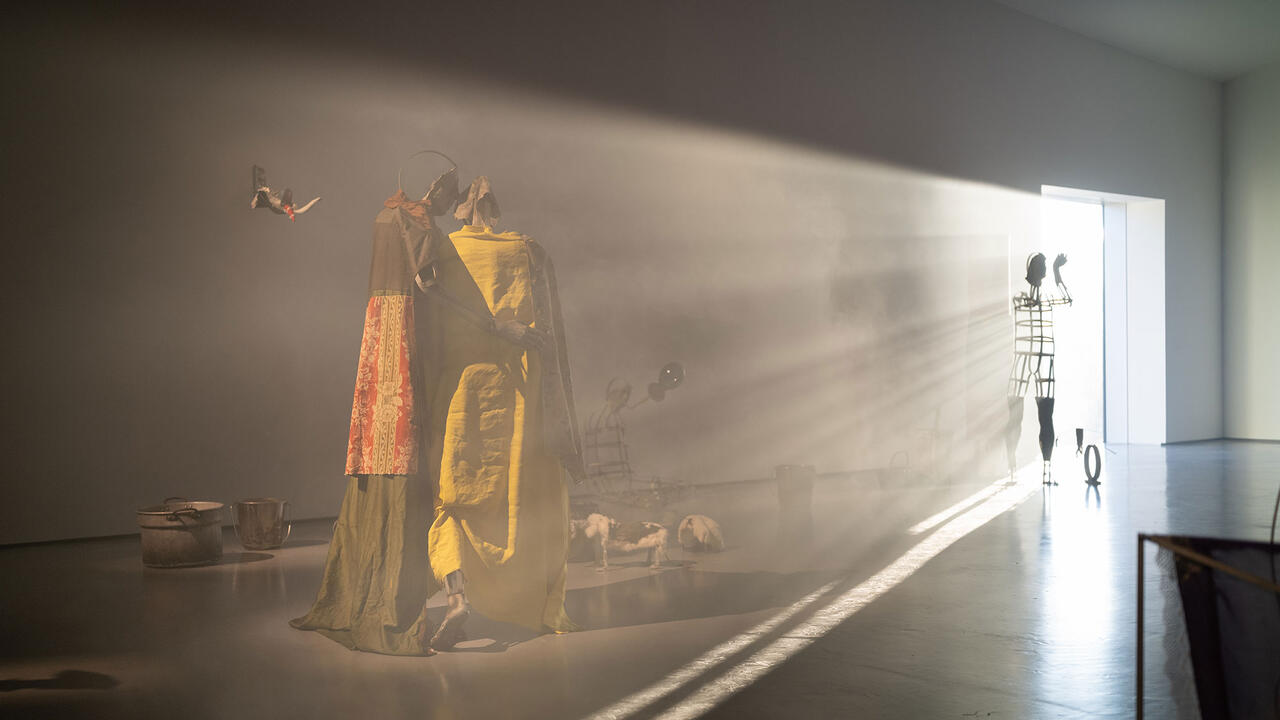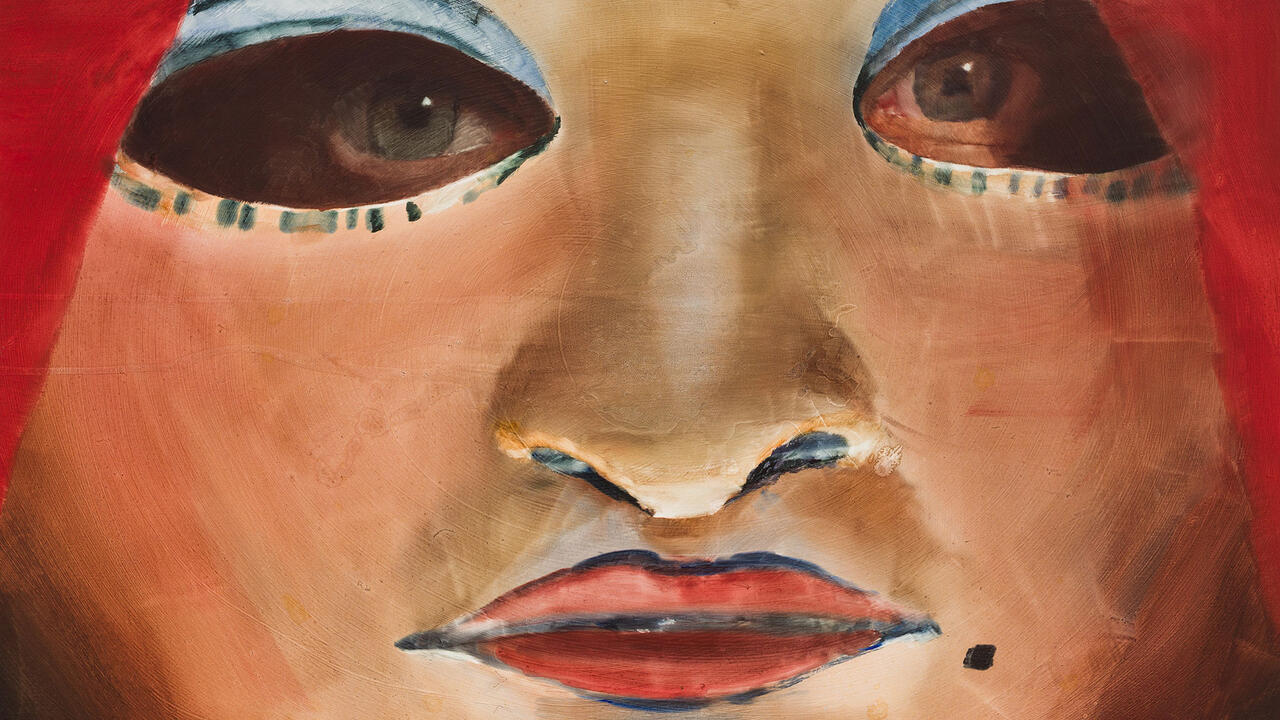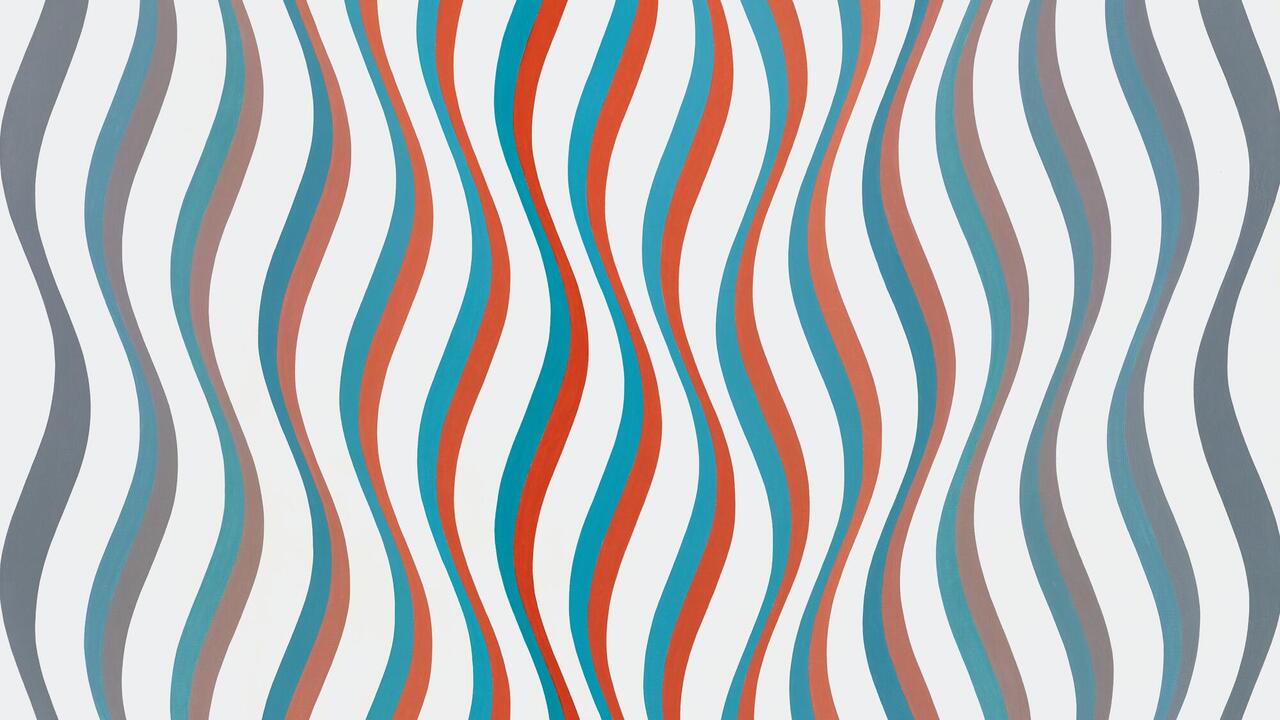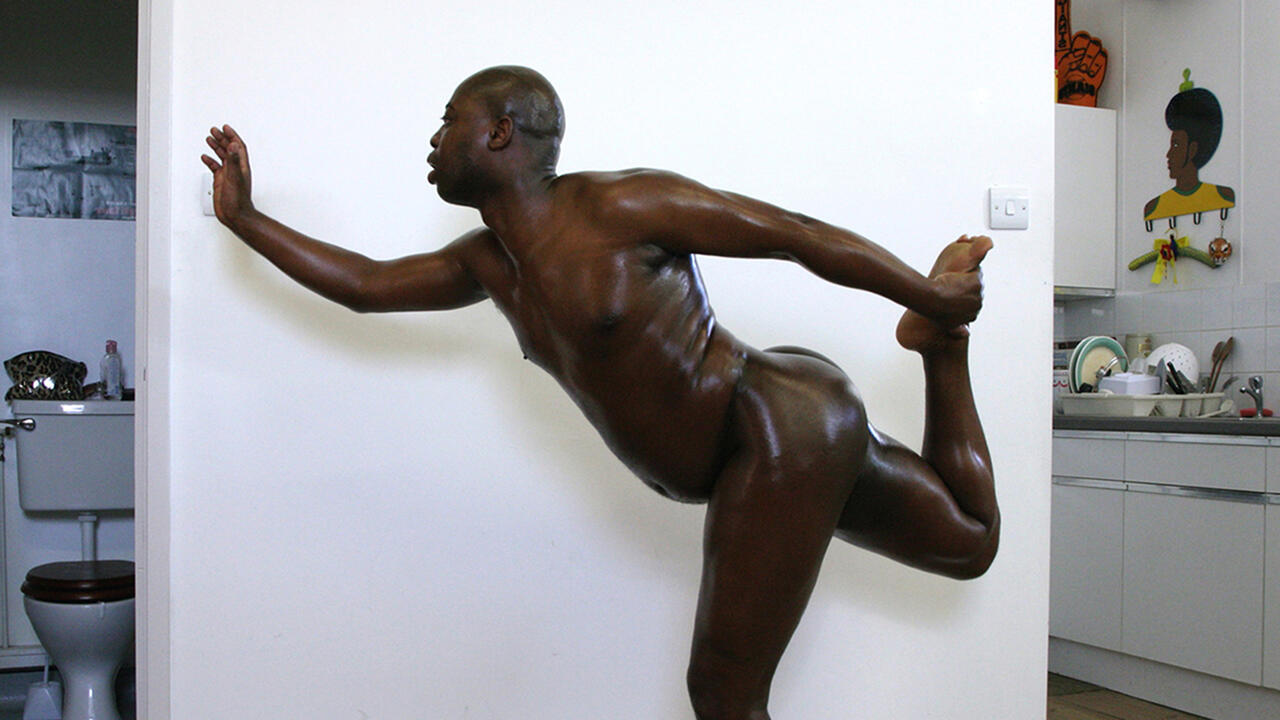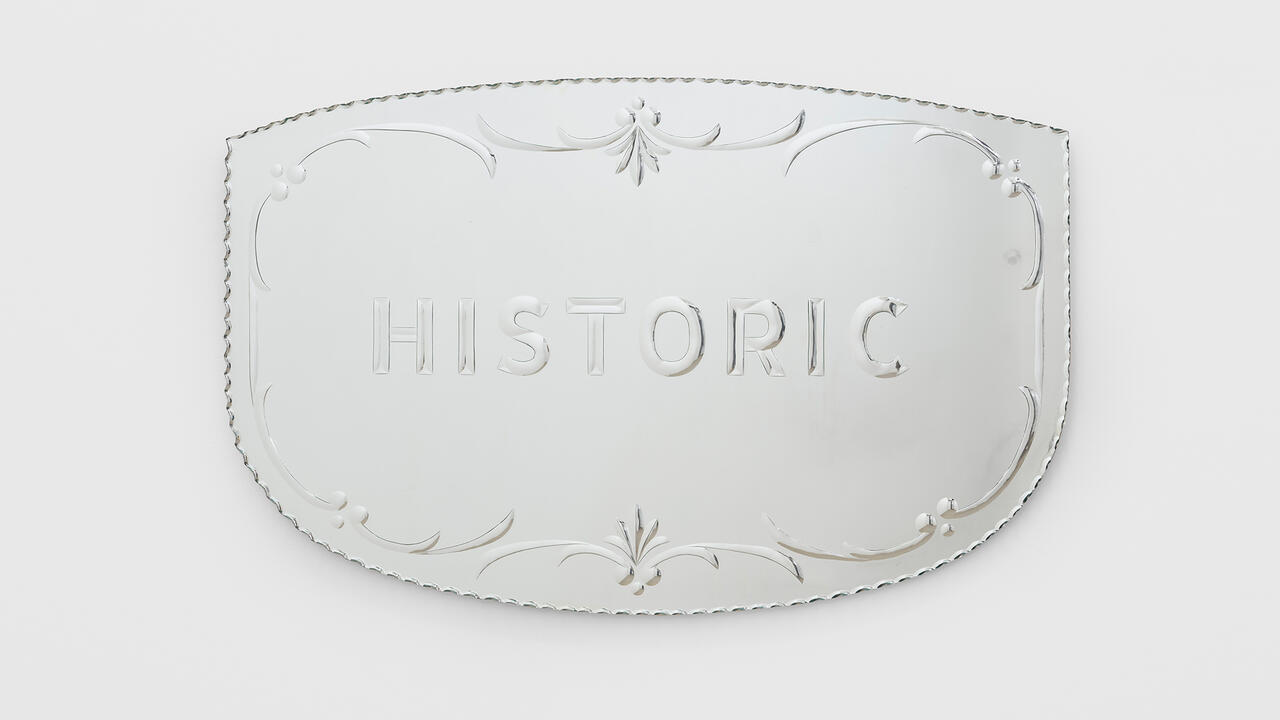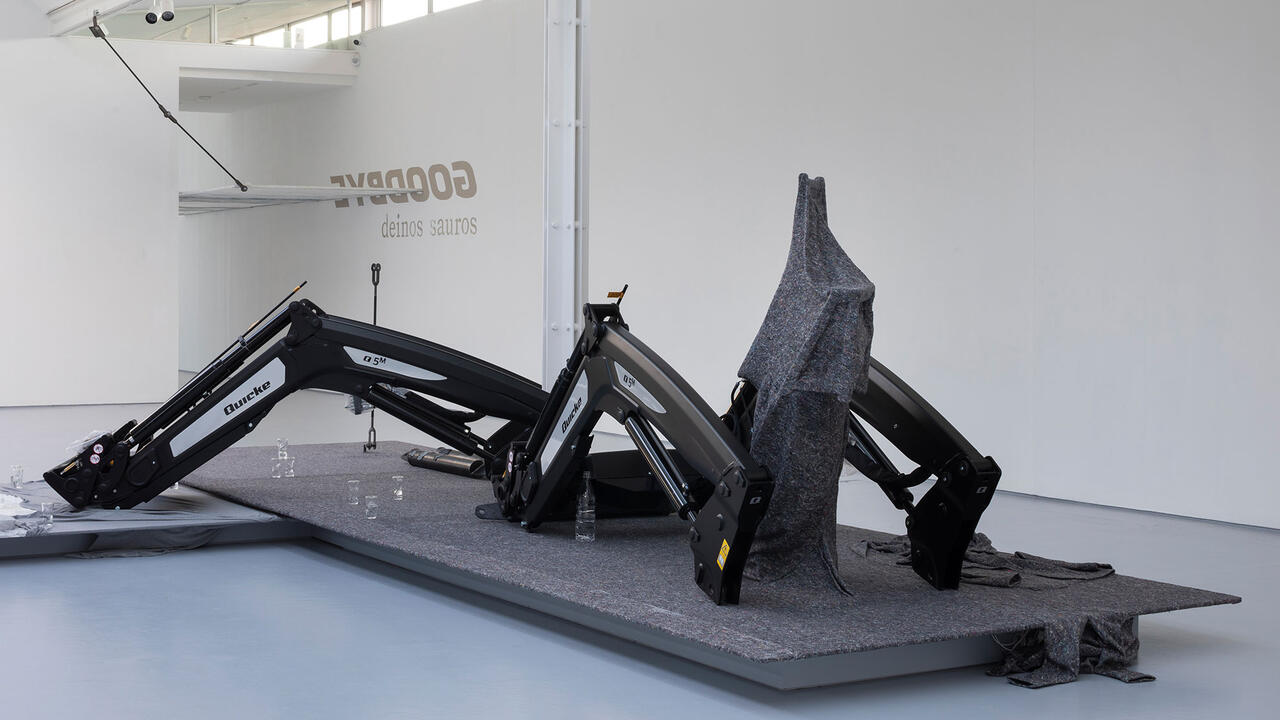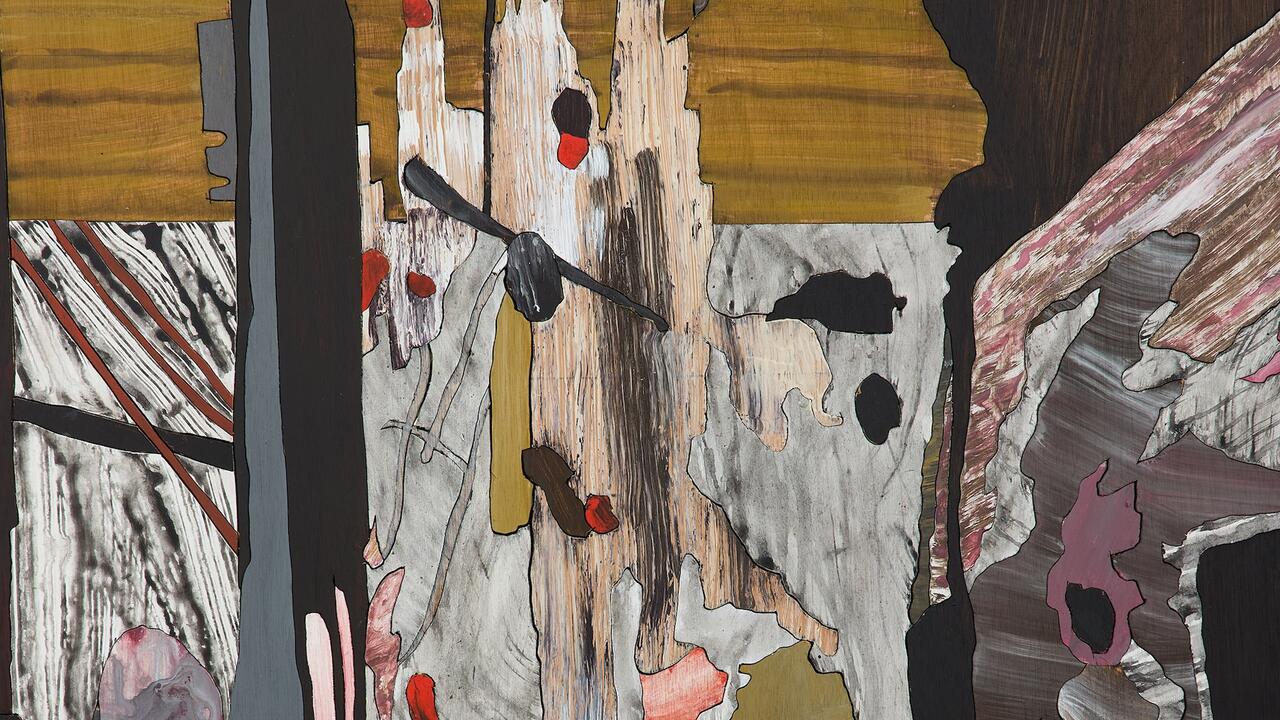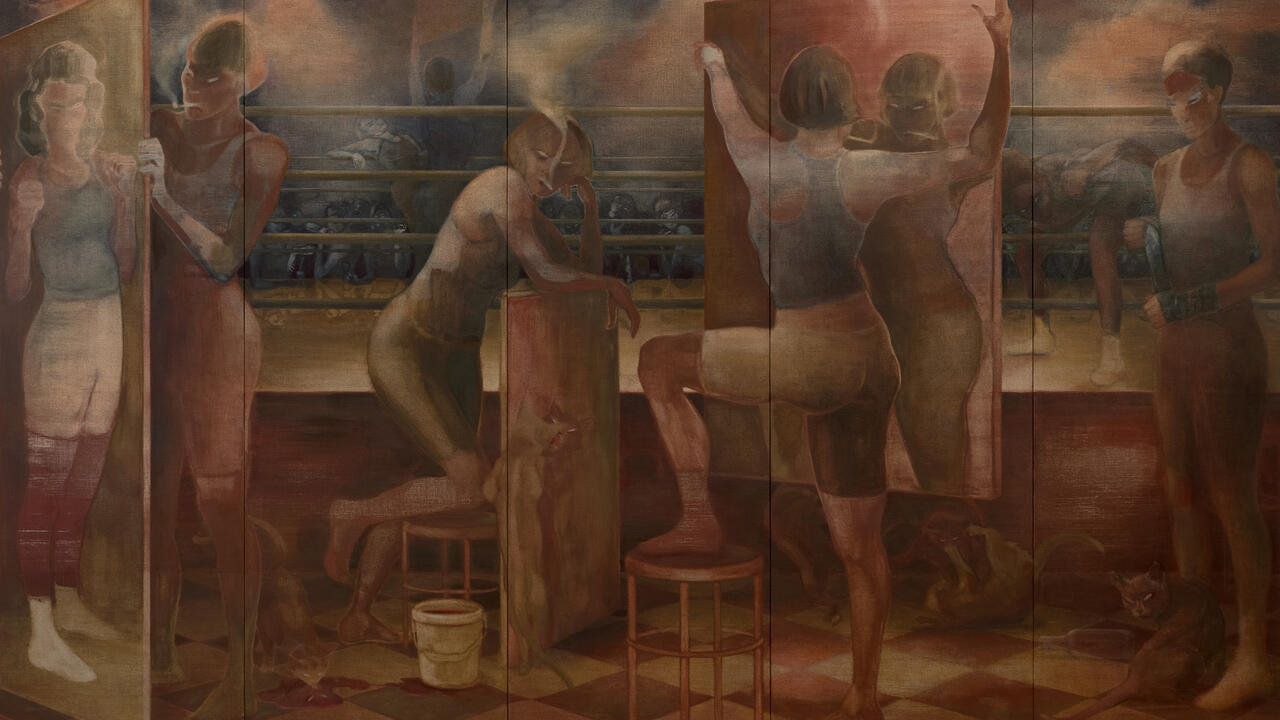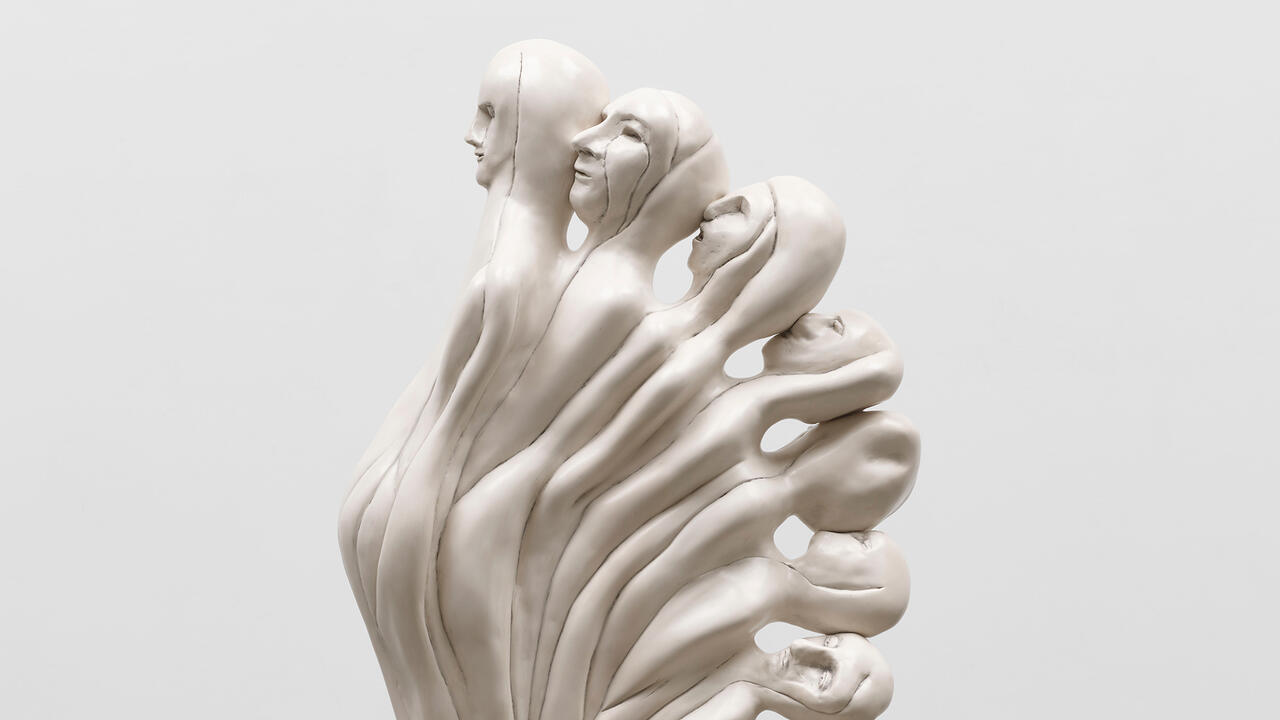Marguerite Humeau’s Post-Apocalyptic World of Insects
At White Cube, Bermondsey, the artist’s landscapes of objects reckon with ideas of existence and extinction
At White Cube, Bermondsey, the artist’s landscapes of objects reckon with ideas of existence and extinction

Marguerite Humeau’s latest show, ‘meys’ – a collection of sound, moving image and sculpture works – imagines a post-apocalyptic world of eusocial insects, such as ants, termites and bees. Humeau’s show is informed by naturalist Eugène Marais’s germinal text The Soul of the White Ant (1925), in which he set out his thesis that termite mounds are living organisms whose inhabitants work together to create and sustain an entity like a body.
In the same way that the cultivation of termitomyces – a species of fungus entirely dependent on termites to survive – brings these creatures together, Humeau suggests that yeast or meys (a Proto-Indo-European word for fermentation), unites humans as an active ingredient in the creation of beer and bread, around which we often congregate. Humeau’s eclectic works pull from different histories and envision spectral futures to reckon with ideas of existence and extinction.

The exhibition opens with a reworked version of artist Adam Kossowski’s mural The History of the Old Kent Road (1965) from the nearby Peckham Civic Centre in southeast London – an area with a history of breweries and mills. The former civic building and its Grade II-listed mural are slated for imminent demolition. Humeau created her own interpretation of the Polish artist’s mosaic by employing AI software GPT-3 to ‘collaborate’ with Kossowski, who died in 1986. The resulting series, ‘The History of Old Kent Road (Post–Kossowski) Fragments’ (2023), contains painstakingly detailed, hand-sculpted stoneware tiles depicting motifs from Kossowski’s original mural fed through Humeau’s post-apocalyptic vision.

‘meys’ is a temporal and spatial journey. After ‘The History of Old Kent Road’, we enter a newly constructed tunnel in the gallery, at the end of which is Collective Effervescence (2023), a film work comprised of AI-generated, surreal images of termites engaged in an unusual dance. At the end of the tunnel, past the film, lies Humeau’s series of ‘Guardians’ (2023), 17 structures in adobe, bronze, natural beeswax, handblown glass and wood, eaten by fungi and worms, spread throughout the largest space in the gallery. Experimental musician Bendik Giske’s manipulated saxophone soundtrack generates the sensation that the room is alive with activity. It’s as though I have entered a dystopian world of arthropods, which have colonized the gallery. But are the creatures from which these mound-like forms derive their shapes still hard at work inside? I can’t help but imagine a termite queen lurking out of sight.

Humeau’s landscapes of objects possess a relationship with time that simultaneously extends far into the future and into the past to appear both prehistoric and futuristic. Her work might equally reference the Venus of Willendorf (a palaeolithic figurine from c.25,000 BP) or the Large Hadron Collider (the world’s largest, highest-energy particle collider). Yet, Humeau’s true inspiration lies in the natural world. When presenting her work at the exhibition preview, the artist described driving through the Australian Outback in the summer of 2022 and seeing termitaries that rose to the sky like goddesses. In its intricate play of references and temporalities, ‘meys’ successfully engenders the sense of wonderment that Humeau experienced in the Outback.
Marguerite Humeau’s ‘meys’ is at White Cube, Bermondsey, until 14 May 2023
Main image: Marguerite Humeau, The Holder of Wasp Venom (detail), 2023, natural beeswax, microcrystalline wax, pigments, 150-year-old walnut (cause of death: unknown), handblown glass and wasp venom 1.9 x 3.2 x 2.9 m. Courtesy: © the artist and White Cube; photograph: Ollie Hammick / White Cube.










